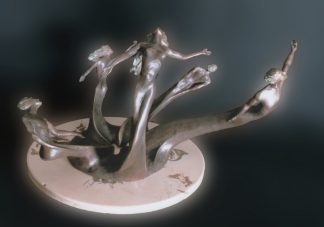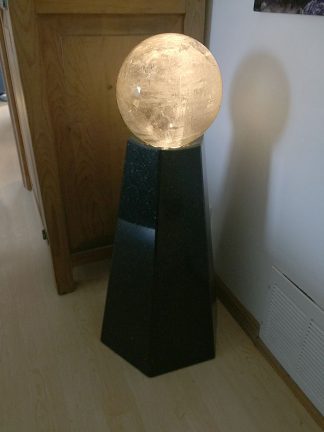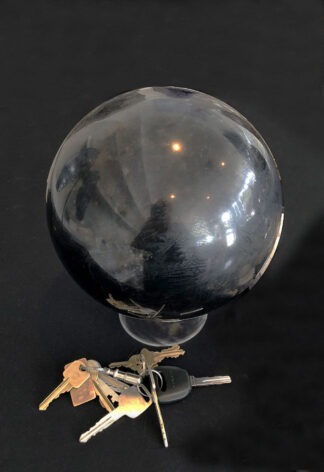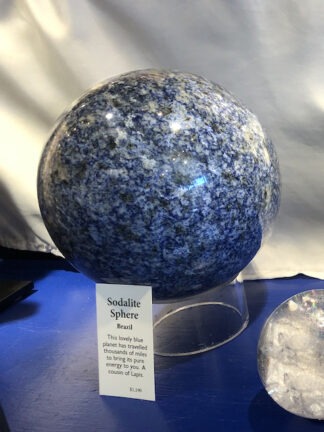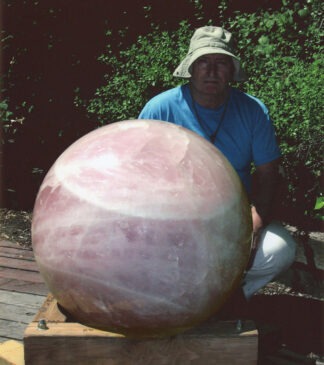Crystal balls are made by painstakingly cutting, grinding and polishing natural quartz into the spherical shape. Sometimes these spheres are a yard wide, and weigh a thousand pounds or more. The original crystal may weigh a ton or more. Large clear quartz crystals are found all over the world from time to time, but they are rare.
The artisans who work on the big spheres may put in a thousand hours of work to get it right- perfectly round and highly polished. Pure quartz crystal balls open up your personal powers when you attune to them through intuition, meditation and imagination. They are used for sensing the past, present and future. They are also valuable as energy healing tools.
CARVING A CRYSTAL BALL
Crystal balls (spheres, globes, orbs) are carved out of large quartz crystals. The original crystals are hexagonal (six-sided) single points that may be eroded, rounded, or broken in the ground or tumbled in a river. A few crystal balls are cut from the junction of 2 or more crystals, and show unusual striations (parallel lines) and rainbow colors inside. Usually, some 80% to 90% of the original crystal is cut away to utilize the clearest part for the final sphere. Typically, the original rough stone thus weighs close to 10 times the weight of the finished object. The cut-away parts are used to carve smaller crystal shapes or small spheres.
To create a sphere, several steps are followed. Because of the hardness of quartz, all the stainless steel cutting and polishing surfaces must be embedded with diamond dust or silicon carbide particles. Tooling machines resemble woodworking equipment, but on a much larger scale for large crystal projects. The rough material is first cut into a cube. Then the edges and corners are cut off, in several stages, to create something like a geodesic sphere (multifaceted ball.) At this point, one or two men physically hold the large multi-sided “ball” up to a giant sanding belt or sanding wheel. The belt is 2 feet wide and 6 feet long, oriented horizontally, and running at low revolutions per minute. With this large silicon carbide belt, the rough edges and angles can be hand ground to the approximation of a round ball. Once the rough grind is complete, there are two alternate methods for creating a perfect sphere. The first method involves spinning the ball on a “cupping machine”. This machine uses 2 or 3 large iron cups on heavy-duty motors with springs to support the ball while it slowly grinds itself round. Traditional rock tumblers cannot be used, as quartz always tumbles into an egg shape, not a ball. The second method uses a turntable and calipers to check every part of the surface for roundness. Uneven points are ground down with a motor-powered hand-grinder. Once the ball is round, it still needs a high polish. Typically, the lapidary artist (carver) will polish the ball in five stages with successively finer grit (polishing powders.) The last stage is called glazing, where a super-fine 40,000-grit cerium oxide powder is used to heat and fuse the surface to a glossy finish. A good polish will be perfectly clear, with no pitting, haziness, or scratches. On our fine
crystal balls, we often have the final polish re-done locally by experienced lapidarists.
